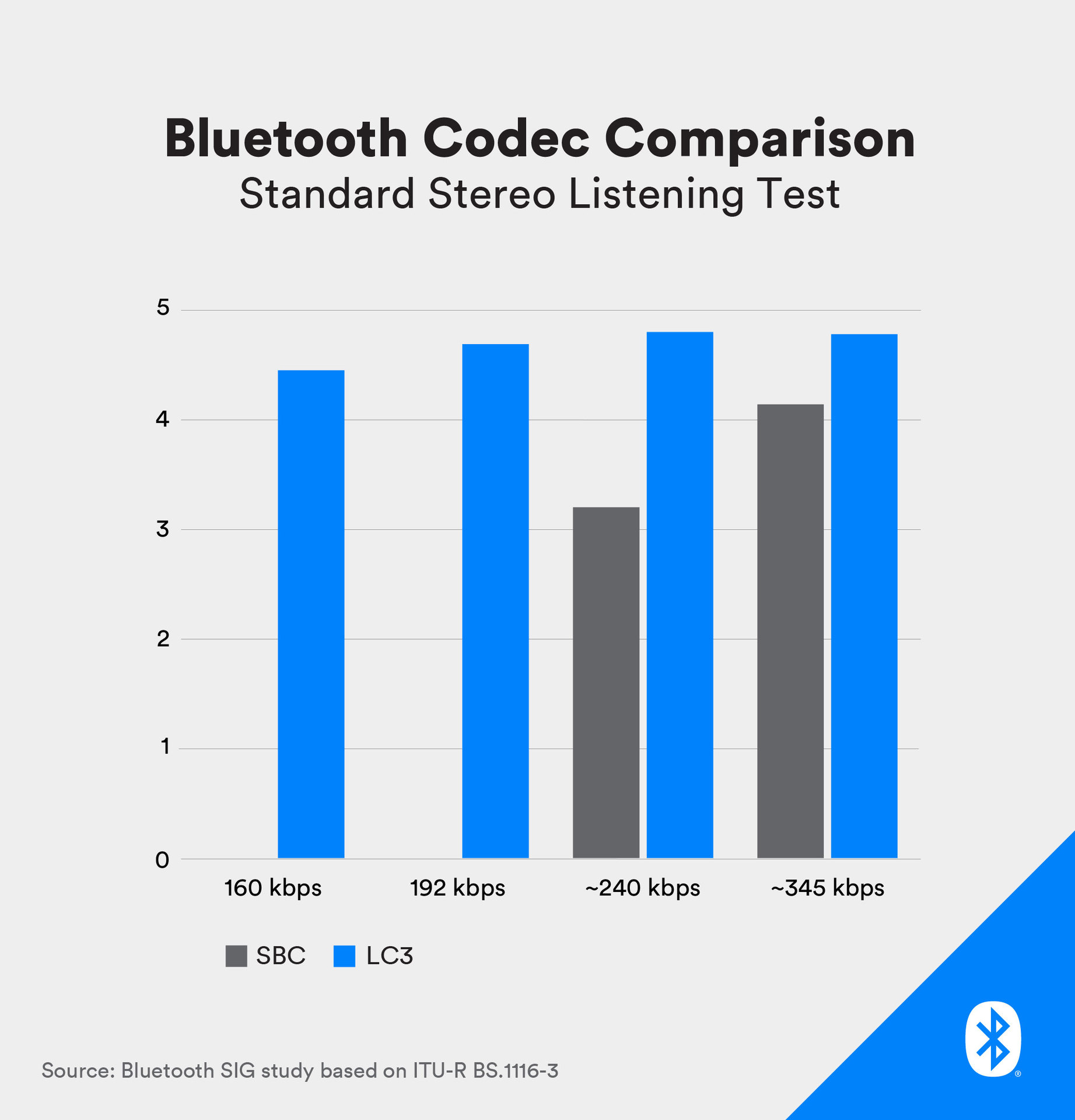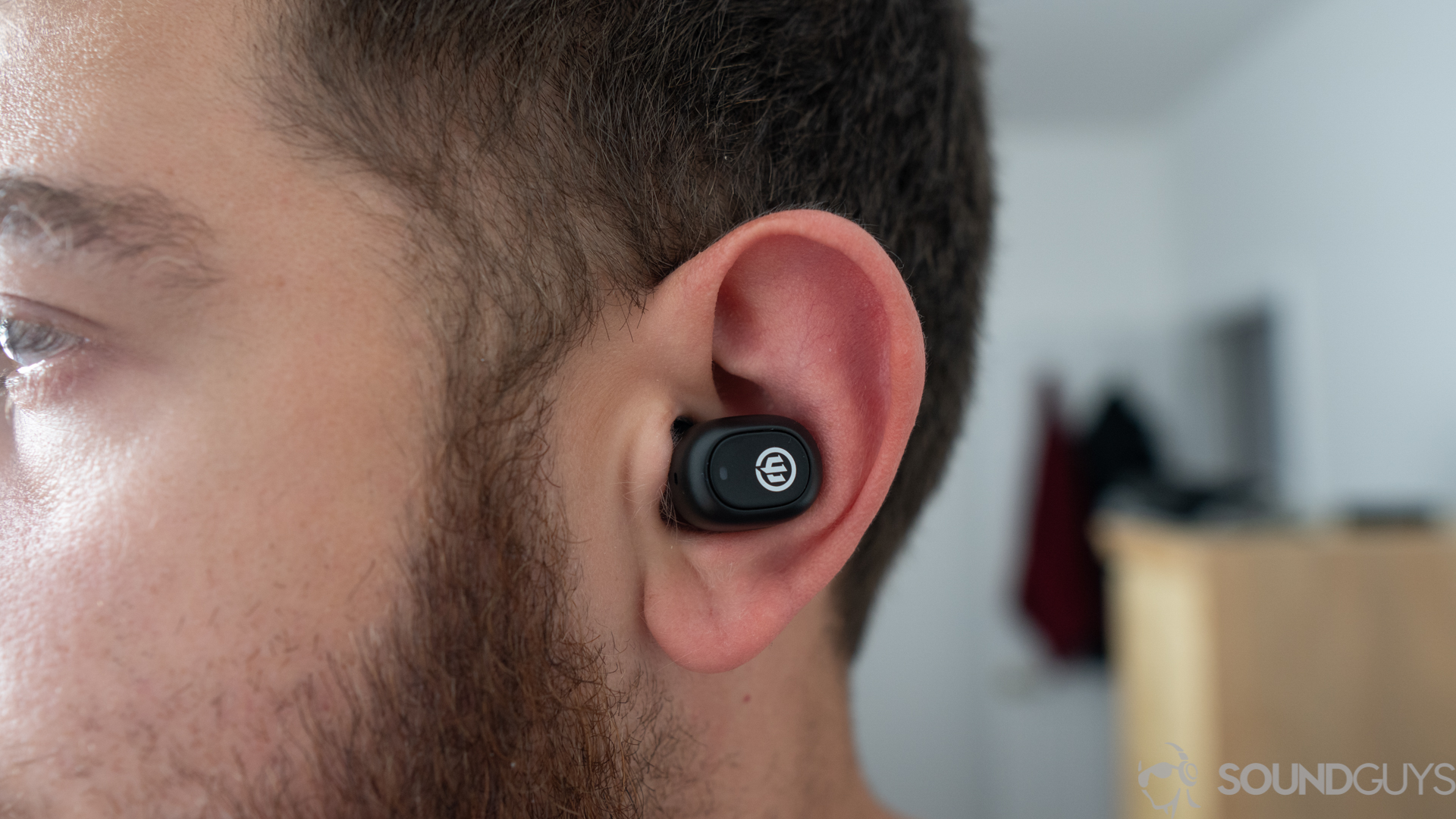For audio enthusiasts, the big story of CES 2020 is clearly Bluetooth SIG announcing a wave of new supported audio technologies. Built into the core Bluetooth Low Energy (LE) standard, these new features fall under the LE Audio name. Next-gen Bluetooth audio gear gains a lot of very useful features that should be much more widely supported than third party equivalents.
Headline-grabbing features of the new LE Audio standard include the new LC3 Bluetooth codec, which sounds superior to the current default SBC codec. There’s also now native support for true wireless earbuds and Bluetooth features for hearing aids too.
Here’s everything that you need to know about Bluetooth LE Audio and all its features.
Bluetooth LE and LE Audio
Before diving into the audio side, a bit of Bluetooth background is required. Currently, there are two major forks of Bluetooth radio operation – Bluetooth Classic and Bluetooth LE. Low Energy caters for low power, low bandwidth data transfers between IoT-like devices like fitness trackers. It launched as part of Bluetooth 4.0 and remains under the Bluetooth 5.0 and 5.1 standards.
Bluetooth Classic, which includes older Bluetooth 1.0, 2.0, and 3.0 use cases, is still required for more power-hungry high-speed data transfers. This includes as sending audio data between your phone and headphones. All of the current Bluetooth audio codecs, whether that’s default SBC, Qualcomm’s aptX, or Sony’s LDAC, transmit data over Bluetooth Classic.
LE Audio changes the game, finally enabling audio data to transmit over the lower power and lower bandwidth Bluetooth LE radio too. That’s obviously great for both headphones and handset battery life and listening times. However, LE Audio will first be supported in version 5.2 of the Bluetooth Core Specification. Meaning you’ll need new devices to take advantage of it.
Check out the video below for more details on LE Audio and its components.

Meet the LC3 Bluetooth codec
LE Audio introduces an all-new Bluetooth audio codec called LC3 (Low Complexity Communication Codec). A codec compresses audio for transmission over the air. If you need to brush up on what a codec is, check out our breakdown here. LC3 scales down to very low bit-rates while retaining good sounding audio quality. This ensures data correctly sends over the limited bandwidth of Bluetooth LE even in congested radio conditions.
For example, LC3 scales from 345kbps right down to 160kbps. SBC, Bluetooth Classic’s mandatory codec, ranges from 345kbps to 240kbps. But it takes a substantial hit to audio quality as a result. aptX Adaptive runs between 279 and 420kbps, while LDAC ranges from 330 to 990kbps. LC3 is by far the most compact Bluetooth codec used in consumer audio to date. But what effect does that have on audio quality?

LC3 scores higher for sound quality than SBC and also runs at lower bit-rates.
According to Bluetooth SIG, LC3 sounds much better than SBC even when running at lower bit-rates. The company presents the above graph, showing an industry-standard perception score for sound quality at different bit-rates.
You can read about the ITU-R BS.1116-3 perception test here if you’re so inclined. The key thing to note is that a score of 5.0 is imperceptible from the source. 4.0 indicates a perceptible but acceptable quality difference, and a score of 3.0 is “slightly annoying” in terms of quality degradation. As you can see, LC3 hovers around 4.5 even at its lowest quality setting, which is much better than SBC performs at much higher bit-rates.
The scalable nature of the LC3 codec matches the ideas we’ve seen from aptX Adaptive and LDAC. Quality dials back when connection quality becomes an issue, such as when listening at long distances or in congested radio environments. The move to the limited bandwidth of Bluetooth LE makes this a necessity. It will be interesting to see how regularly LC3 defaults to higher quality bit-rates.
LC3 changes Bluetooth forever
While this may all sound boring and overly in the weeds, the real-world applications of this wireless connection are going to change a lot about how people use their Bluetooth audio accessories. This includes those who use hearing aids and other devices meant to make audio accessible to those with impairments. That’s because the LC3 offers what Bluetooth has been missing for so long: the ability to have multiple synchronous connections by default.

True wireless earphones will get dramatically better
Wireless earbuds are a staple of the audio market these days, but they aren’t all the same. Qualcomm supports True Wireless stereo (left and right audio data directly to the specific earbud) with its smartphone and headphone chips from a couple of generations ago. However, default Bluetooth is stuck with the original method of transferring stereo data to one earbud and then sending a mono channel onward to the other earbud. When the new rue wireless earphones get their Bluetooth 5.2 hardware, they’ll be able to leave this issue in the dust. Additionally, by switching to LE audio, they can offer much better battery life as well.
Share your music with friends over a single source
This old method is bad for power consumption and latency. Fortunately, Audio LE supports proper true wireless earbuds using independent synchronized audio streams. Audio LE takes this further, supporting multiple-device streaming from a single source. For example, two or more listeners streaming movie audio from a laptop to their own Bluetooth headphones.
Audio Broadcast support also makes an appearance with Bluetooth Audio LE. This is a mass broadcast version that supports loads of users predominantly in public places, allowing them to tune headphones into various supported sources. Examples include TVs showing sports in bars, cinemas, or streaming TV news channels in multiple languages. For the hearing impaired, this technology integrates into hearing aids too.
Hearing aids are about to make life even easier for millions
Here’s where all this tech comes together to solve a real-world problem. While improving the lives of those who cannot hear well may not be the sexiest feature of any wireless standard, the real-life application of LC3 devices holds a lot of promise for the hard of hearing because it enables listening directly to the sources around you.
For example, there’s currently a small emitter device that looks a bit like a hockey puck demoed at CES 2020 that can enable hearing impaired users to connect their hearing aids directly to the movie they’re watching, the church sermon they’re listening to, or even sporting events. Essentially, you’re piping the live broadcast into your ear canals, instead of having the hearing aid try to record and process the ambient sound around you. Hearing aids currently suck out loud at this task because they have very glaring technical issues that can’t really be overcome in their current configuration.
Shortcomings in hearing aids is one of those more “invisible” impediments that those hard of hearing have to suffer through, but LE audio goes a long way in alleviating some of the crappier parts of going to a public event and having a tough time hearing it. While there’s no guarantee that the hardware will be available soon, Bluetooth 5.2 and LC3 seem to be exrtemely promising—at least from the hearing aid demo units Chris Thomas tried at CES.
When can I use Bluetooth LE Audio?
LE Audio will be bundled as part of the upcoming Bluetooth 5.2 specification. Unfortunately, we’ll have to wait for new playback sources and headphone hardware sporting Bluetooth 5.2 chips to arrive before we can test it out. But as none of this is proprietary technology, market adoption of these features will be reasonably fast.
The first hardware components supporting LE Audio will be making their way out to developers later in 2020. This suggests that the first consumer products won’t appear until very late in 2020 or early 2021. Support for Broadcast Audio may not appear in public spaces until 2022.
